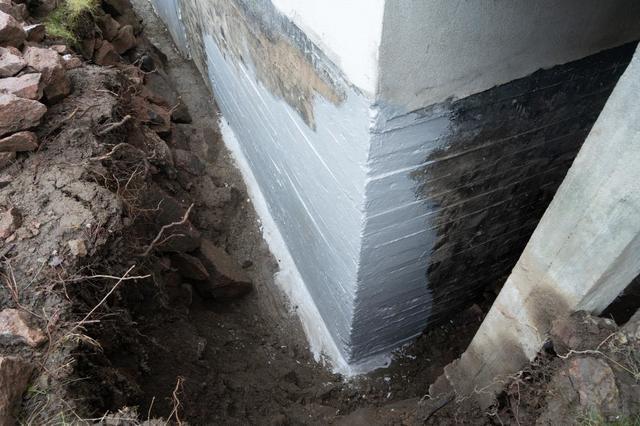What's The Difference Between Interior And Exterior Waterproofing?

Water intrusion can cause a lot of issues, including mold, structural damage, and expensive repairs. That's why waterproofing is so critical in maintaining a safe home. But when it comes to waterproofing, there are two different methods: interior and exterior. What do they mean? And which one is right for you?
In this blog, we give you the ins and outs of interior and exterior waterproofing, sharing each of their benefits, and disadvantages so you can make an informed decision about your home.
Exterior and interior basement waterproofing defined
First, let's define each method to gain a better understanding of each approach.
Exterior basement waterproofing
As the name suggests, exterior basement waterproofing protects your basement from water intrusion by addressing the issue from the outside. It involves excavating the soil around your home to expose the foundation walls. Once exposed, the walls are cleaned and a waterproof membrane or coating is applied to the exterior walls.
This membrane acts as a barrier and prevents water from seeping through the foundation. On top of that, a drainage system, like a French drain, is installed to redirect water away from the foundation.

Interior basement waterproofing
Interior basement waterproofing is a little different where it's a method that addresses water intrusion from inside the basement. Rather than digging up a ton of soil on the outside, interior waterproofing focuses on managing water that has already entered the basement and redirects it out and away from the home.
There are a few steps to this process. First, any existing water is addressed by installing a sump pump, interior drainage system, and dehumidifier. These systems help control and manage water buildup within the basement.
Next, the walls and floors are sealed using a vapor barrier, which is a thick liner that prevents water vapor from permeating through the walls.

Comparing exterior and interior basement waterproofing
While both exterior and interior basement waterproofing aim to protect your basement from water damage, they do differ in their approach and application.
The biggest difference is this: Exterior waterproofing primarily focuses on preventing water from entering from the outside, while interior waterproofing manages and redirects water that has already entered the basement.
However, the excavation process with exterior waterproofing can be more intense and expensive. It involves removing everything surrounding your house including porches, driveways, walkways, landscaping, AC units, and more.

Interior waterproofing, on the other hand, is a practical solution that's more cost-effective and less disruptive since it doesn't require any excavation.
The choice between exterior and interior basement waterproofing depends on a few things, including your budget, your home, and your personal preference.
Whatever you do, hire a reputable contractor
Whichever method you go with, it's so important you pick a reliable and trustworthy contractor for the job. Both interior and exterior waterproofing requires extensive experience to do the job correctly.

If you have any questions about these methods, please reach out to us. And if you're in our service area and have water in your basement, we'd love to give you a free home inspection. You can fill out our form here, start a chat in the bottom right-hand corner, or call us at 515-585-6491.

